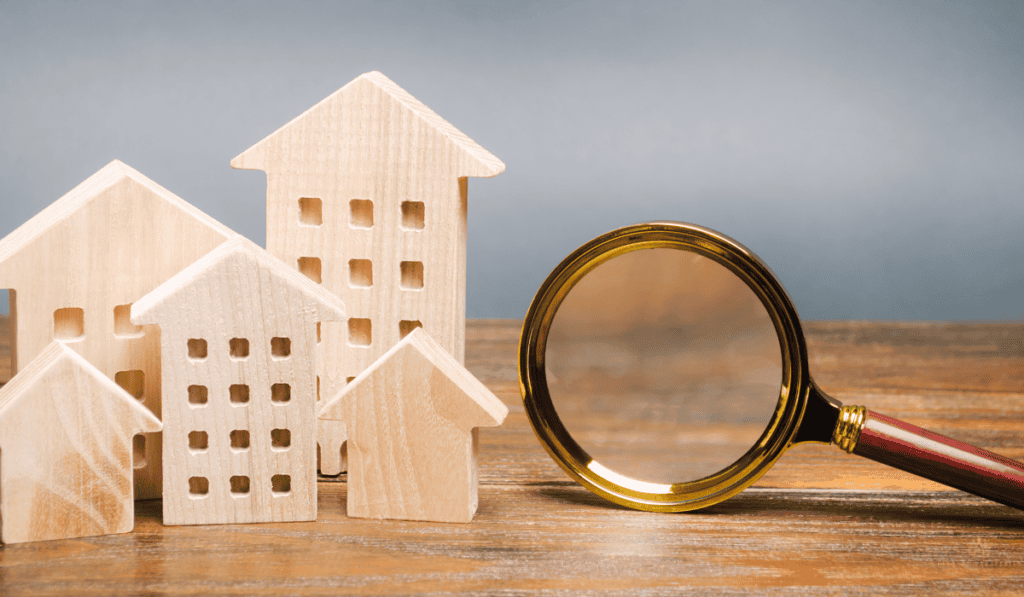
Commercial real estate can feel like a moving target these days. In Q3 2024, property sales across the U.S. dropped. Transaction counts were down 9.9%, dollar volume was lower by 9.6%, and square footage slipping 11.4% compared to the same time in 2023.
Fluctuations like this make nailing down a fair market value more important than ever.
From our experience, getting an accurate property valuation often starts with the commercial sales comparison evaluation, a method trusted by professionals to gauge a property’s value based on recently sold properties with similar characteristics.
This article walks through how it works, why it matters in a changing commercial real estate market, and how we can all use it to make sharper, more confident investment decisions.
If you’ve already gone through our previous article on commercial property underwriting, you know that valuation is just one piece of the puzzle.
Understanding how to analyze a commercial property helps investors dig deeper into a property’s financials, risks, and potential returns.
After mastering valuation, the next step is ensuring no detail is overlooked, which is why we’ve also put together a Commercial Property Due Diligence Checklist in the next article to help navigate the final stages before closing a deal.
Let’s start.
Short Summary
- Commercial sales comparison evaluation helps determine a property’s value by analyzing recently sold properties with similar features.
- It’s a trusted valuation method in commercial real estate appraisal, often compared to the income approach and cost approach.
- Accurate evaluations rely on identifying comparable properties in the same market area and adjusting for property features and market conditions.
- Key metrics like net operating income (NOI), gross rent multiplier, square foot comparisons, interest rates, and future cash flows guide valuations.
- Using market data tools, avoiding common pitfalls, and working to predict future trends can improve accuracy.
Understanding The Sales Comparison Approach In Commercial Real Estate

When we’re evaluating commercial properties, the sales comparison approach often becomes our starting point. It’s a tried-and-true method that helps us estimate a property’s value by comparing it to similar properties that have sold recently.
This approach works best when we have plenty of recently sold properties to pull from, ideally within the same market area, giving us a real-world sense of what buyers are actually paying.
Keep in mind, though, that accurate property valuation is just one part of making informed investment decisions. For more insights, tools, and expert guidance on commercial real estate, explore our homepage to see how we can help you navigate the market with confidence.
Role In Commercial Real Estate Appraisal
We’ve seen how the sales comparison approach plays a huge role in commercial real estate appraisal. Lenders lean on it when deciding financing terms, and investors rely on it before making a purchase.
When we need to pin down a fair market value for a subject property, having comparable properties lined up makes the final number far more reliable.
Comparison With Other Valuation Methods
Of course, this isn’t the only valuation method we use. Sometimes, we lean on the income approach, especially when a property’s cash flow is the primary focus.
We look at net operating income (NOI) and use income capitalization to gauge the property’s market value. Other times, the cost approach makes more sense, like when we’re dealing with a newer building.
This method estimates how much it would cost to replace the structure, factoring in depreciation and other relevant factors. But from our experience, the sales comparison method often feels the most grounded. It reflects current market realities.
Key Factors Influencing the Valuation Process
One lesson we’ve learned: accurate valuations depend heavily on quality data. We need recent sales data, not figures from two years ago when real estate prices were different.
Location also matters. A subject property based downtown won’t match prices in a suburban area.
We always check property features like lot size, condition, and average lease cost. Small details like a new roof or parking availability can shift a property’s estimated worth significantly.
Practical takeaway: Don’t just grab a few comparable sales and call it a day. Dig deep into sales data, weigh market conditions, and stay sharp on current market shifts. That’s how we lock in accurate property valuation every time.
How Commercial Sales Comparison Evaluation Works

Figuring out a property’s value using a commercial sales comparison evaluation might sound technical, but it’s really about following a clear, practical process. We’ve found that sticking to a step-by-step approach saves time and helps avoid mistakes, especially in the commercial real estate market when the stakes are high.
Step-by-Step Breakdown of the Evaluation Process
Here’s how we tackle it:
Step 1. Identify the Subject Property:
First, we gather everything we need about the subject property: location, size, condition, ownership interest, and gross income if it’s rented. Missing details can lead to wrong numbers later.
Step 2. Locate Comparable Properties:
We hunt for comparable properties within the same market area. They should be as similar as possible in property features, like square footage, age, and use.
Step 3. Analyze Recently Sold Properties:
Next, we pull recent sales data on recently sold properties, ideally from the past six months. Markets shift fast. A price from last year could mislead us today.
Step 4. Examine Comparable Sales Data:
We dig into comparable sales data, comparing sale dates, adjusted sale prices, and any differences in market conditions. This part can get detailed, but it’s where we find the real value.
Step 5. Adjust For Differences:
We adjust prices based on the differences between both the subject property and similar properties. Things like renovations, parking, or zoning can swing values up or down.
Step 6. Estimate The Fair Market Value:
Finally, we estimate the fair market value based on all this data. It’s not guesswork. It’s calculated, using sales comparison as our foundation.
Identifying Comparable Properties In The Same Market Area
We always stress this: stick to the same market area. A property in a booming downtown won’t compare to one on the edge of town. From our work, we know local market factors like nearby developments or average lease cost can shift values quickly.
Analysis Of Recently Sold Properties And Comparable Sales Data
Pulling recent sales is important. We look for recently sold properties with sale dates close together, ensuring current market accuracy. We’ve seen cases where outdated sales data skewed appraisals, leading buyers to overpay.
Adjusting For Property Features And Market Conditions
No two commercial properties are identical. We adjust for upgrades, square foot differences, or changes in market trends like interest rates. Small shifts can mean big gaps in purchase price. Skipping this part isn’t an option. That’s how mistakes happen.
Nailing these steps gives us accurate property valuation every time. It’s all about knowing the valuation process inside out and staying tuned into the real estate markets we work in daily.
Key Metrics In Commercial Property Valuation

When we work through a commercial sales comparison evaluation, the numbers tell the story. But not just any numbers; we want the right ones.
Getting a handle on key metrics like net operating income, gross rent multiplier, and square foot values can be the difference between a solid deal and a financial millstone.
Over time, we’ve learned that tracking these metrics carefully makes accurate property valuation much easier and helps us spot red flags before they become costly mistakes.
Net Operating Income (NOI) Considerations
We always start with net operating income (NOI). It’s the backbone of valuing commercial properties.
- NOI is the income a property generates after operating expenses but before debt service and taxes.
- We check gross income from rents, subtract costs like property maintenance, utilities, and management fees. Then we get our NOI.
- From our experience, underestimating expenses here can inflate a property’s value. That’s a quick way to overpay.
Gross Rent Multiplier (GRM) Analysis
Next, we check the gross rent multiplier (GRM). It’s simple but powerful.
GRM = purchase price ÷ gross income.
We use it for quick checks, especially when screening multiple commercial properties.
We’ve found that GRMs vary widely between market areas, so relying on a general number doesn’t cut it. Local data wins every time.
Square Foot Comparisons
Space matters a lot. Comparing square foot values is a must in commercial real estate.
- We calculate the price per square foot for both the subject property and comparable properties.
- This helps us see if we’re paying above the local average or getting a fair deal.
- We’ve spotted deals priced low per square foot but with hidden issues like poor layouts or needed upgrades.
Impact Of Interest Rates And Market Trends
Interest rates can shift a deal overnight. We’ve seen purchase prices drop when rates jump because buyers adjust their budgets.
- Tracking market trends and financing conditions is critical.
- We stay updated on current market shifts so we can adjust our valuation process when needed.
Importance Of Future Cash Flows

Lastly, we consider future cash flows. This is where gross income projections and lease cost expectations matter.
- Are rental rates expected to rise?
- Are vacancy rates creeping up in the local market?
- Cash flow assumptions shape property value, and we’ve learned to pressure-test those forecasts, every time.
Maximizing Accuracy In Sales Comparison Analysis
Commercial sales comparison evaluation isn’t just about plugging in data and hoping for the best. We’ve learned that accurate property valuation depends on collecting the right information, using solid tools, and staying sharp to avoid mistakes.
Here’s what’s worked for us, and what’s saved us from a few headaches:
Best Practices For Data Collection
We’ve seen evaluations fall apart because of bad data. It’s that simple.
- Always pull comparable properties from the same market area. Even a few miles can skew values.
- Look at recently sold properties (within the last six months, if possible). Current market conditions change fast, so outdated sales tell the wrong story.
- Verify square foot measurements, gross income, and net operating income directly when we can. Listings can exaggerate, and we don’t take those at face value.
Tools For Analyzing Market Data
Technology makes life easier, but we pick our tools carefully.
- CoStar and LoopNet give us broad access to commercial properties data.
- MLS platforms work better when we need local detail on purchase price and square foot values.
- We also keep custom spreadsheets for gross rent multiplier calculations and tracking future cash flows. It keeps us hands-on and sharp.
Common Pitfalls To Avoid
Some lessons are learned the hard way. Here’s what we steer clear of now:
- Relying only on purchase price without checking NOI and gross income projections.
- Assuming all comparable sales data is accurate. Double-check everything!
- Ignoring interest rates shifts. They affect buyer demand and property value faster than you’d think.
Tips For Gaining Valuable Insights
This is where experience pays off.
- Talk to local brokers. They know the stories behind comparable properties.
- Visit subject properties whenever possible. We’ve spotted zoning issues and hidden repairs that data alone missed.
- Review lease agreements. A low lease cost on paper might mean the tenant is struggling.
Strategies to Predict Future Trends
Looking ahead matters, especially in commercial real estate.
- Watch vacancy rates and new developments. They hint at where rental rates are headed.
- Track market trends and interest rates; they shape future cash flows more than most people realize.
- Stay connected with other buyers. From our experience, those conversations give us a heads-up on local market shifts before they hit the data.
Final Thoughts
Getting property values right in commercial real estate takes work, but it’s worth the effort. We’ve seen how a solid commercial sales comparison evaluation leads to better decisions, fewer surprises, and stronger returns.
Staying on top of comparable sales data, market trends, and key metrics helps keep valuations accurate, even when the market shifts. Trust the process, double-check your numbers, and lean on the right tools.
If you’re ready to sharpen your valuation game, start applying these steps to your next deal.
Frequently Asked Questions
What Is Commercial Property Underwriting?
Commercial property underwriting is the evaluation process used by lenders and investors to assess the risks and financial viability of a commercial real estate property before approving a loan. It involves reviewing property performance, market conditions, and borrower stability.
Why Is Net Operating Income (NOI) Important In Underwriting?
NOI measures a property’s profitability after operating expenses but before debt payments. It helps underwriters determine cash flow strength and whether the property can cover its debt obligations.
How Do Underwriters Evaluate A Borrower’s Creditworthiness?
They review credit history, financial statements, income sources, and employment stability. Lenders want to confirm the borrower can handle debt and maintain the property.
How Do Market Conditions Affect Underwriting?
Changing interest rates, local competition, or economic downturns can reduce property value or rental income. Underwriters factor these shifts into their risk analysis to protect against potential losses.






